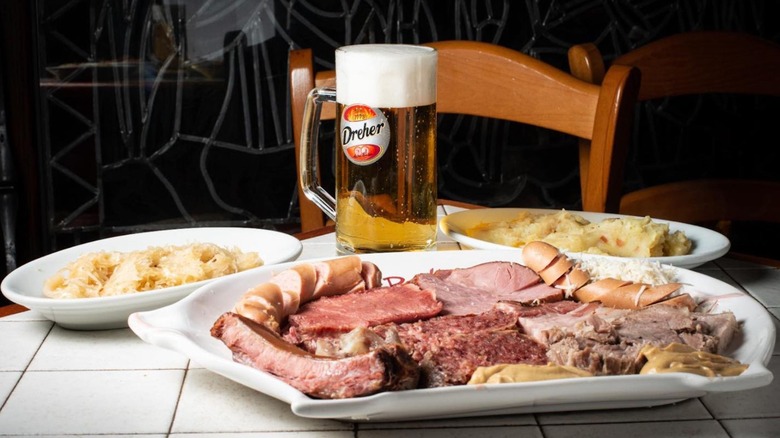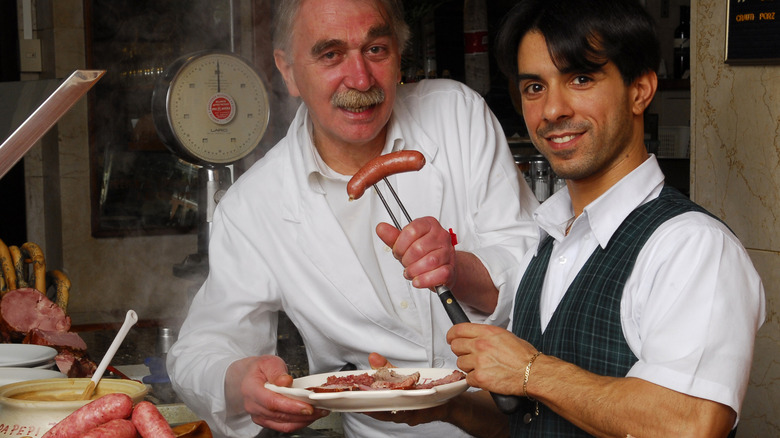The Oldest Buffet In The World Has Been Serving Italians For Over 100 Years
Regular mealtimes rarely sound as romantic as the rebellious in-between meals. But forget the image of a lazy Sunday brunch, for most of history, the people who needed a prandial pick-me-up outside society's prescribed mealtimes were manual laborers. For the longshoremen and warehouse workers of Trieste, Italy, the need for a hearty mid-morning pitstop got the nickname "rebechìn," and that's the best time to visit the world's oldest buffet, Buffet da Pepi, open since 1897.
Workers typically ate before beginning to move heavy cargo at six in the morning. However, the hunger brought on by their muscular work and early rises meant restaurants in the port city, about two hours east of Venice, started making cheap, meaty, hot meals that could be enjoyed quickly in the mid-morning break, before the next shift began. Nowadays, rebechìn has been taken into the hearts of Triestinos of all stripes, thanks to the city's cosmopolitan attitude, the central location of its port, and the many long-lived family-run buffets that keep the tradition alive.
Nowhere else's rebechìn is served with quite the side of history that Buffet da Pepi's is, though. The only notable gap in the restaurant's 126 years of service came amid the death and devastation of World War II. This historic working-class lunch counter has transcended its roots over the years, becoming a local landmark and the kind of place where sailors and bankers might rub shoulders with princes, barons, or dukes.
An Italian buffet, but not as you might picture it
Buffets are different in Trieste. The New York Times compared Buffet da Pepi's small, crowded lunch counter to New York's iconic kosher delis, though of course, this buffet sells pork. There are a few tables outside, but many opt to eat at the counter or take their food to go. You browse the day's offerings as you queue up; the glass display cases contain a mountain of pig products that can be packed into a panini for 4 Euros, or enjoyed as a platter for around 10 Euros per person.
The cuisine served at Buffet da Pepi is more reflective of Trieste's history as the only major port of the Austro-Hungarian empire, and the fact that it actually has more geographic proximity to Vienna. The whole operation revolves around the caldaia, a cauldron of slowly simmering cuts of cured and uncured pork, sausages, ham, and bacon. In a move more reminiscent of Munich than Milan, these soft, rich hunks of flavorsome swine are served with sauerkraut and freshly grated horseradish.
The deli comparisons don't end there — in place of smoked whitefish there is baccalà mantecato, a spread made from salt cod, as well as liptauer, a tangy cream cheese spiked with paprika that's typically spread on rye bread. There are plenty of surprising things about Buffet da Pepi, but once you've heard about it, it's no surprise that the eatery has been a beloved local institution for over 125 years.

